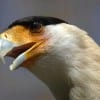 by Jim Stevenson,
by Jim Stevenson,
We had a wonderful Costa Rica Tour with some of the best clients ever! It was fantastic! This week we are in Venezuala, here are some beautiful pictures and descriptions of
Costa Rican birds. Also check out our information on going to Down Under on this site and email me if you’re interested in going with us.
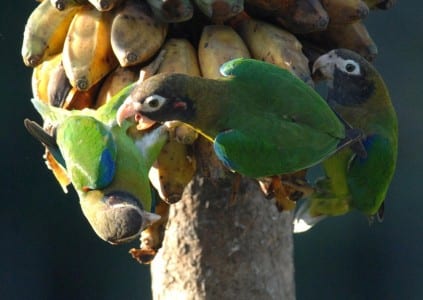
Brown-hooded Parrots are common on the Caribbean Slope and these are enjoying a bunch of bananas, finding them apeeling. 😉
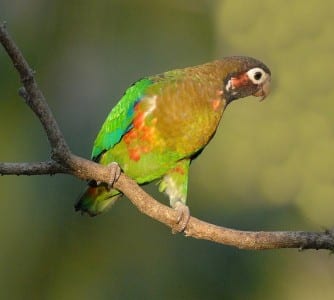
This is a nice look at one Brown-hooded Parrot at Las Laguna Los Lagartos.
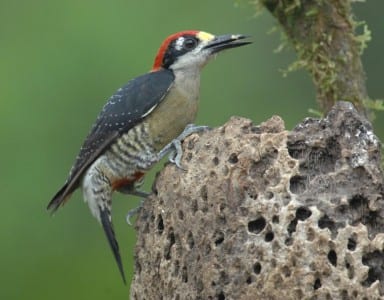
Black-cheeked Woodpeckers are common throughout much of Costa Rica, related to our Red-bellied and Golden-fronteds. Below, a Blue-crowned Motmot hides in the shadows of a montane rain forest.
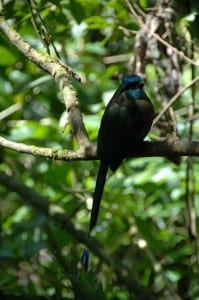
Here is a Blue-crowned Motmot hides in the shadows of a montane rain forest.
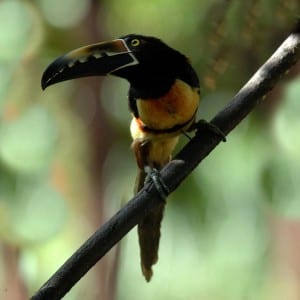
Aracaris are toucan-like birds, slightly smaller than toucans and they roam in small flocks. This is the Collared Aracari.
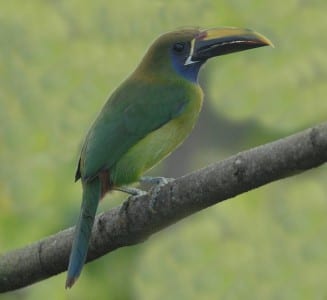
Toucannets are miniature toucans with slightly shorter bills and less gregarious habits.
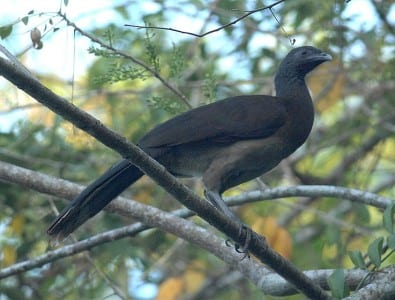
Chachalacas are large, chicken-like birds of the tropical branches, with one species entering the US in South Texas. This is the Gray-headed Chachalaca.
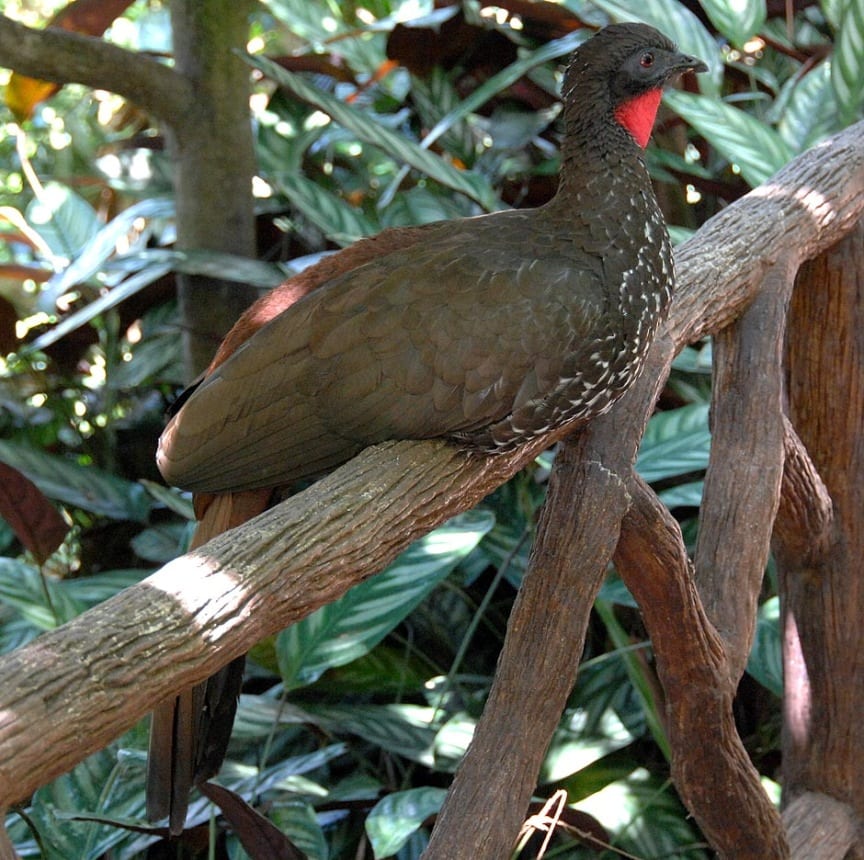
Guans are also galliforms (like chickens) but are very large. They tend to become quite tame around people (when not shot at), which is true of the entire order.
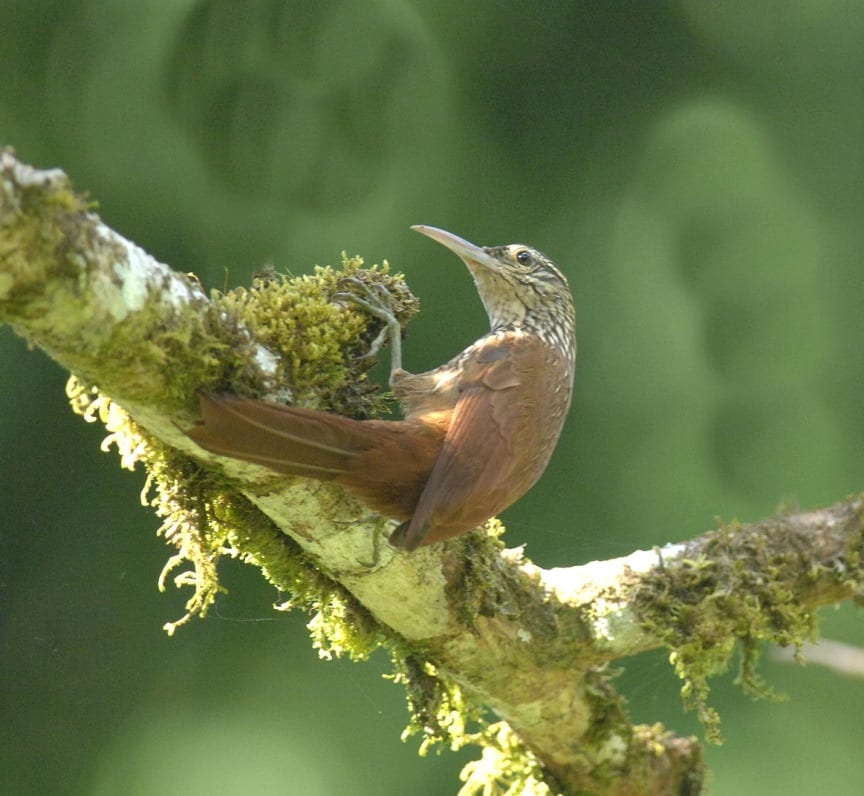
Woodcreepers are much larger than our Brown Creeper and many species inhabit Tropical America. Note the stiff tail for propping up against the tree.
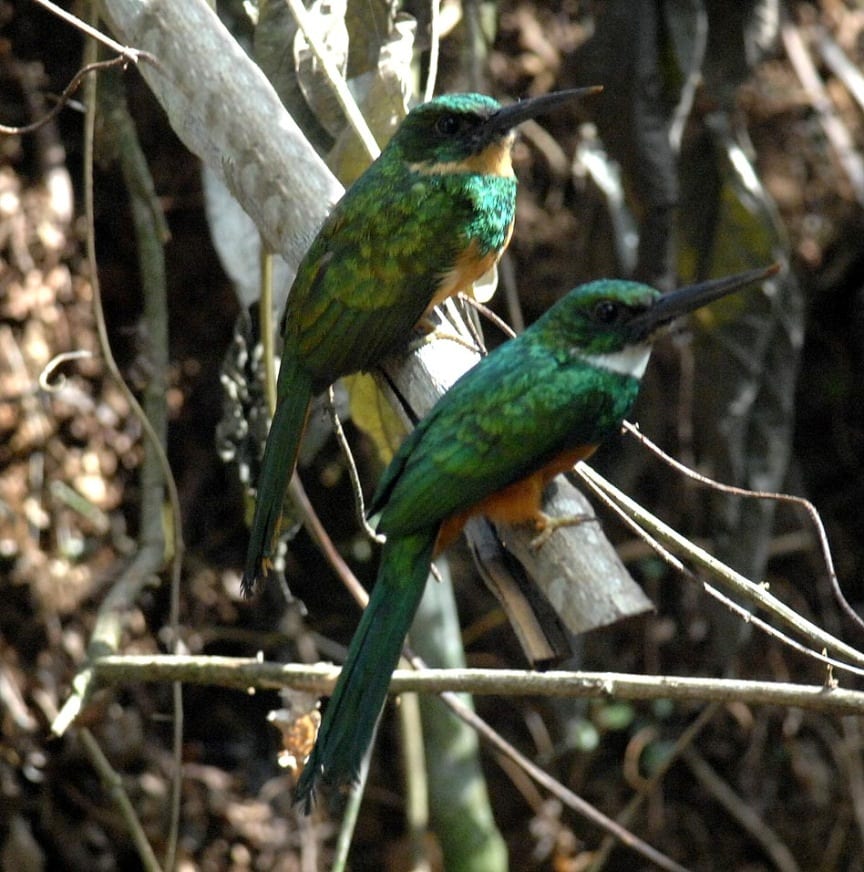
Jacamars are relatives of kingfishers that live in forests and nail insects with their long, dagger bills. These are Rufous-tailed Jacamars, including the one below.
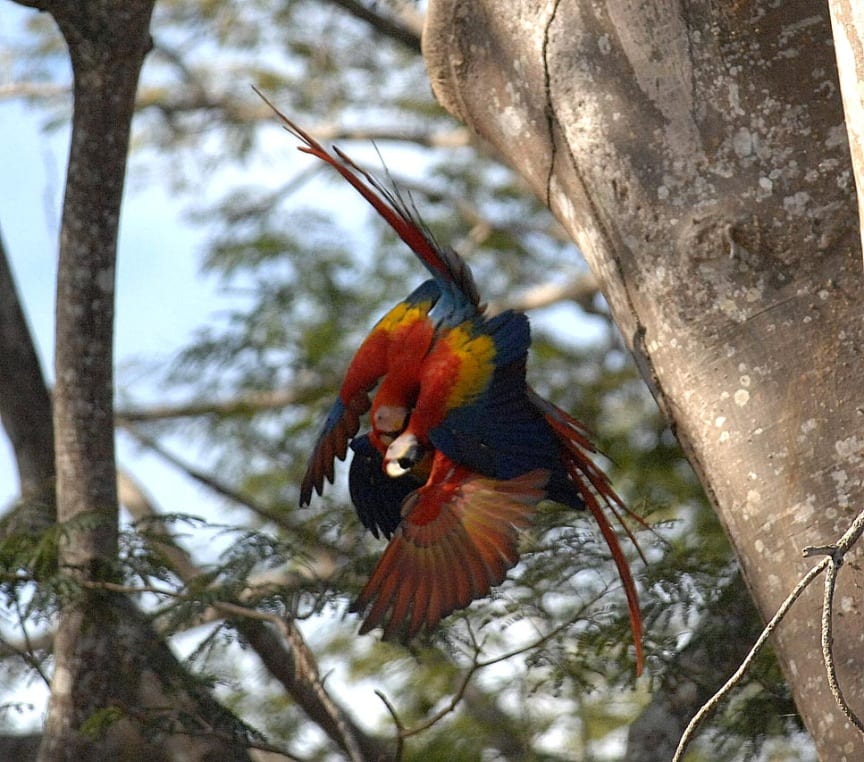
Scarlet Macaws are ever-increasing in Costa Rica and these are doing their darndest to help the process.
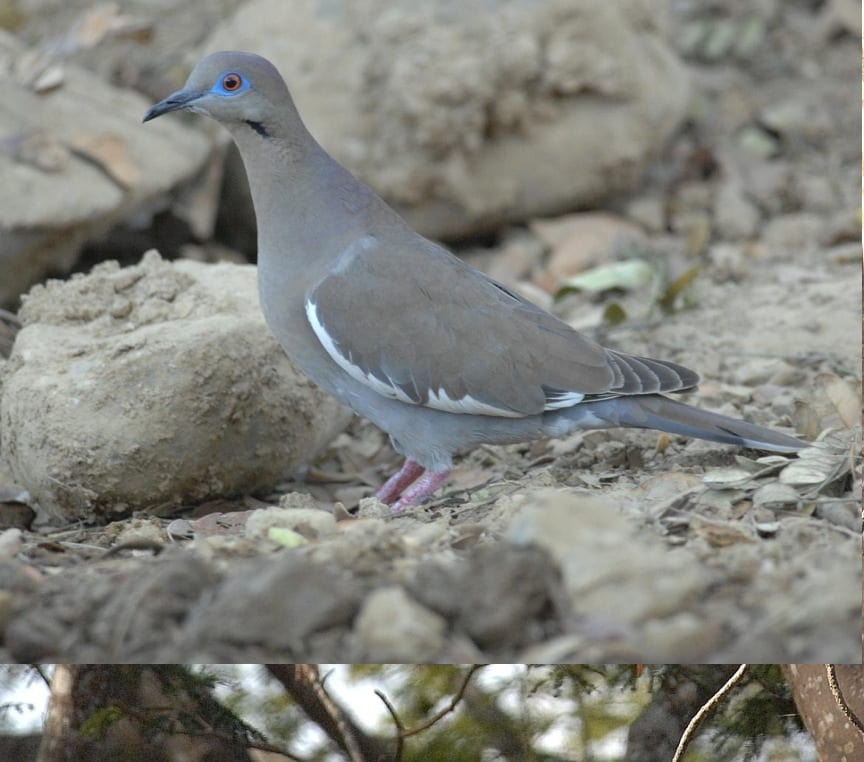
White-winged Doves range well down into the Tropics but are also increasing in Texas and other places in the US. They are common in the Costa Rican Lowlands.
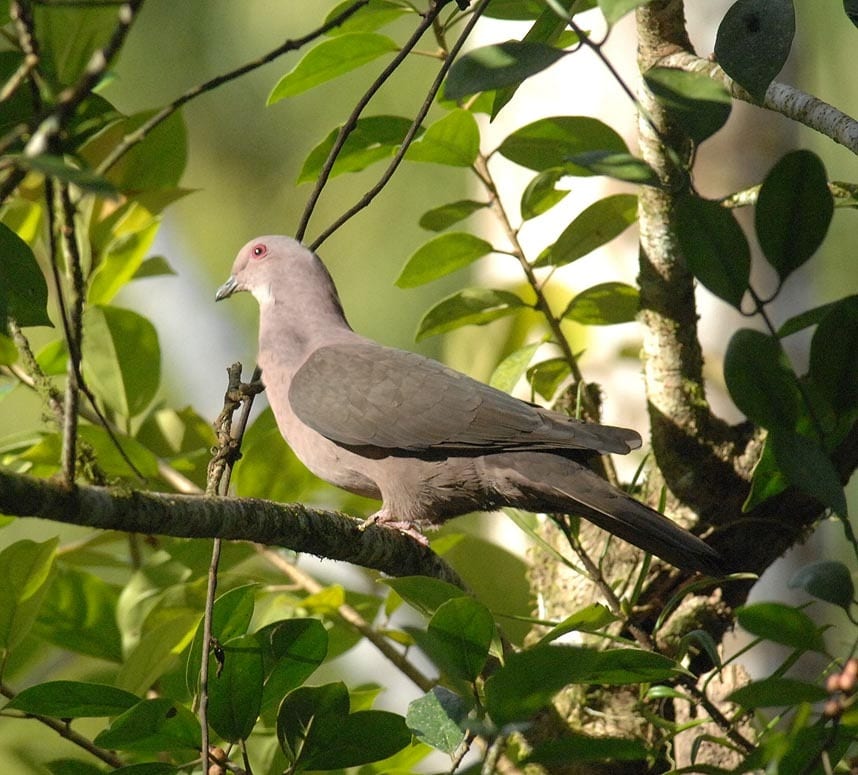
Several species of brown pigeons occur in the Tropics similar to this Short-billed Pigeon (like the Red-billed in Texas). They are fruit-eaters and often wary.
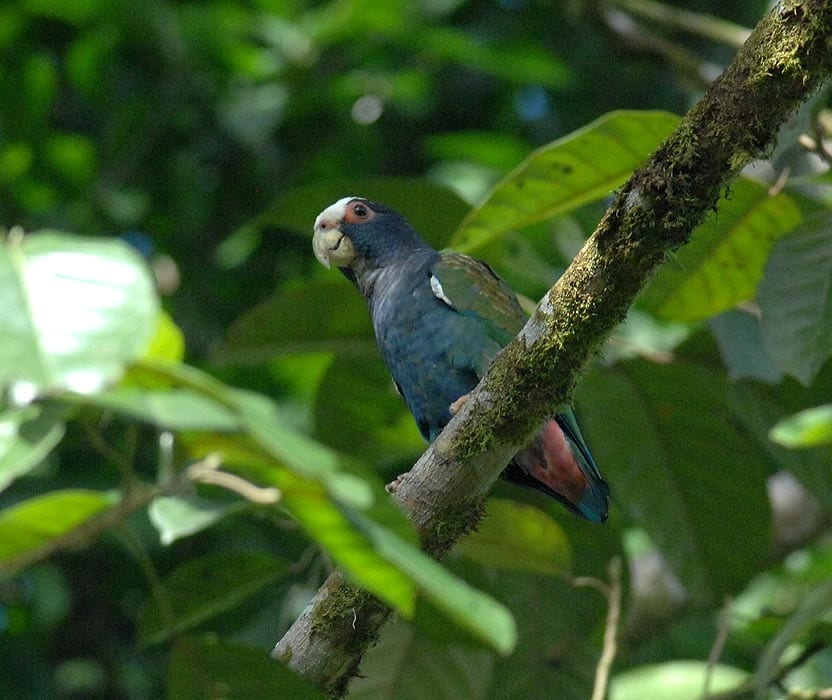
White-crowned Parrots are common on the Eastern Slope. Parrots have short tails and are larger than most parakeets, which have longer, tapered tails.
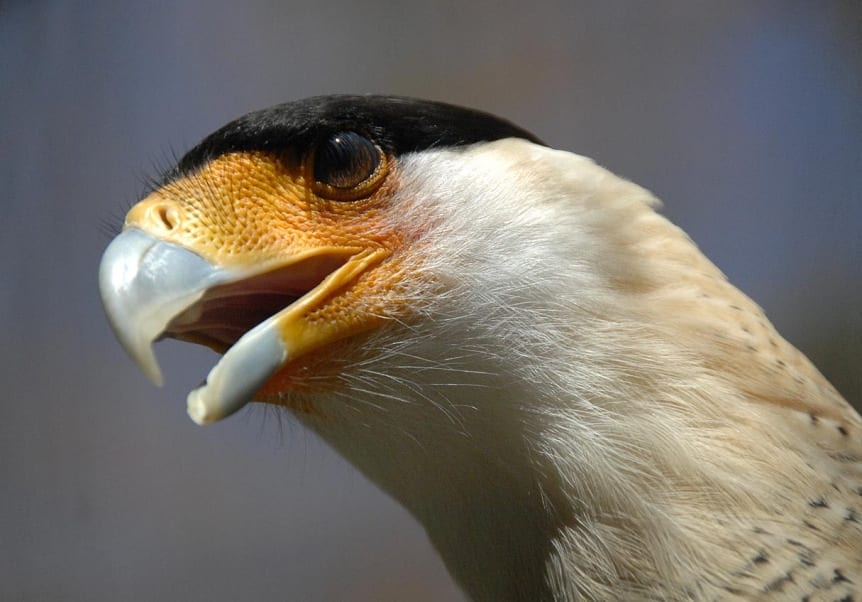
Crested Caracaras become very tame around dusty sites alongside dirt roads. They take dust baths and congregate like us in saunas.
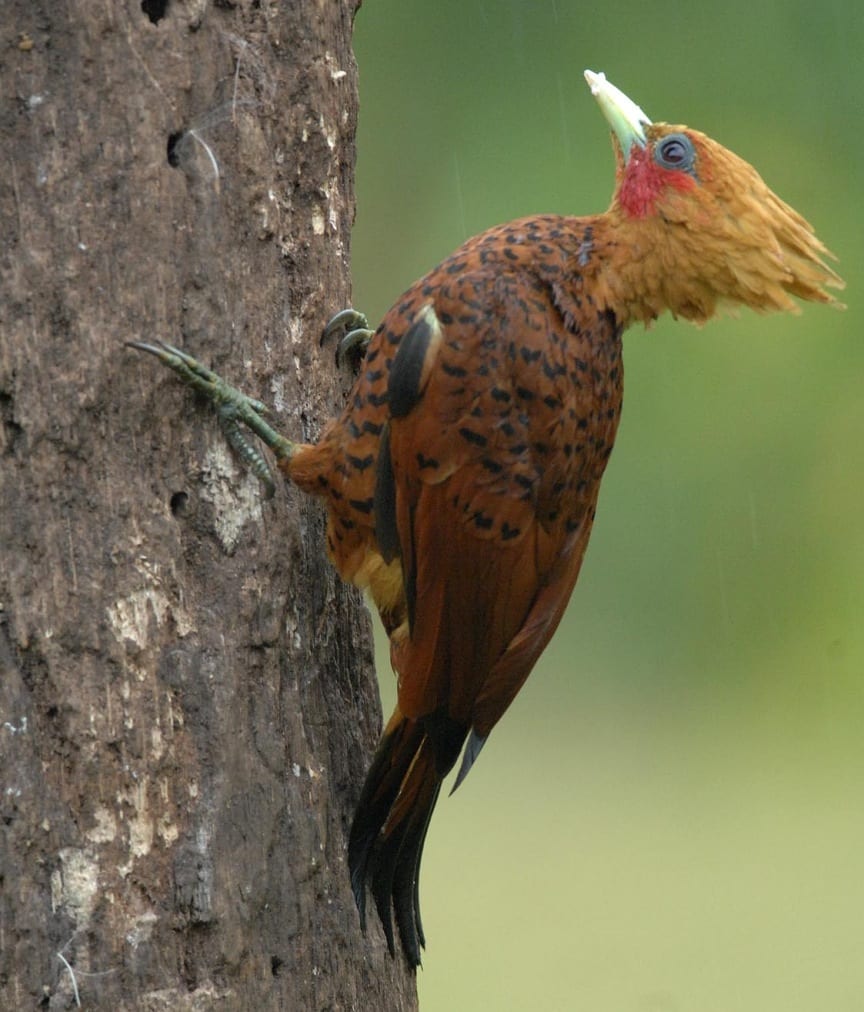
Chestnut-colored Woodpeckers are beautiful birds of the low-to-mid-range forests. This is a male, with the red cheek.
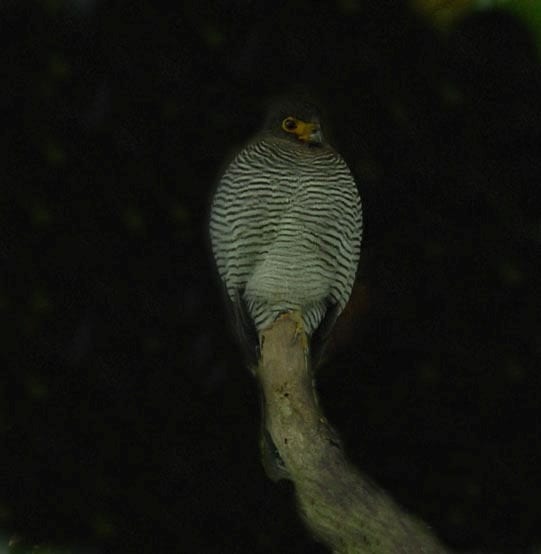
This little bird-eating hawk of the accipiter genus hides quietly in the dark forest, waiting for an unfortunate songbird to flit by.
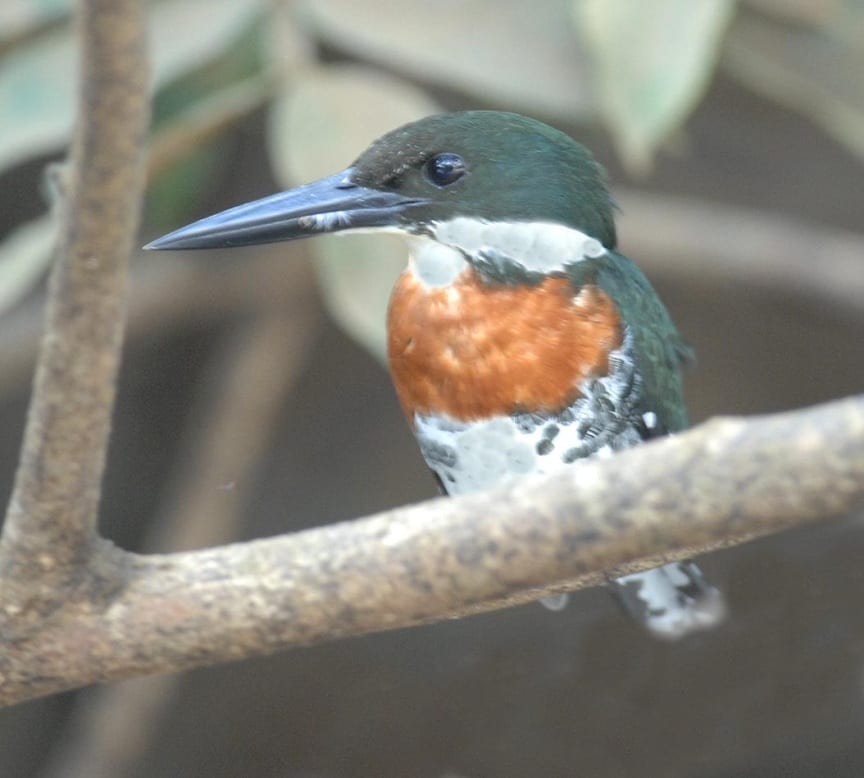
Costa Rica has many kingfishers but this Green Kingfisher is found as far north as Central Texas. Look at that bill!
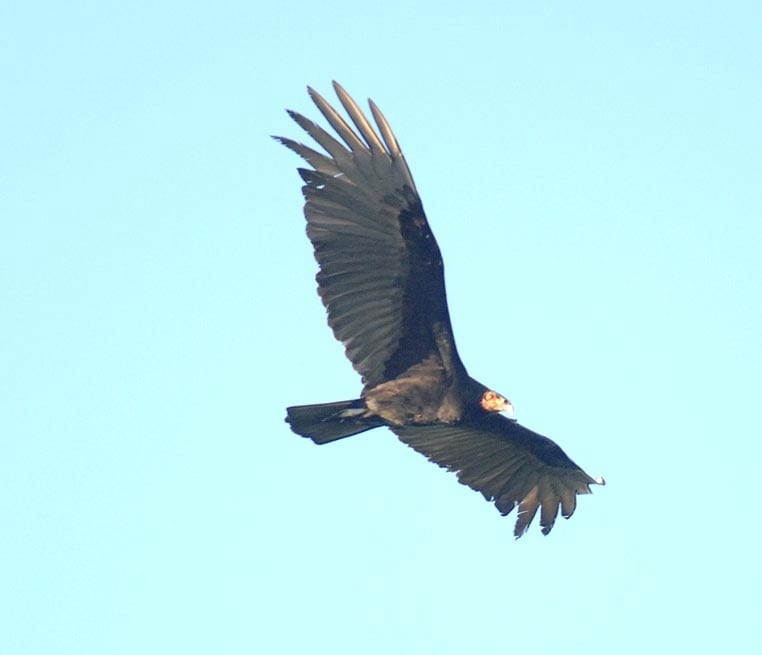
Yellow-headed Vultures are quite like Turkey Vultures (below) with much yellow on the head. They also have light on the wing-tips and fly lower to the ground.
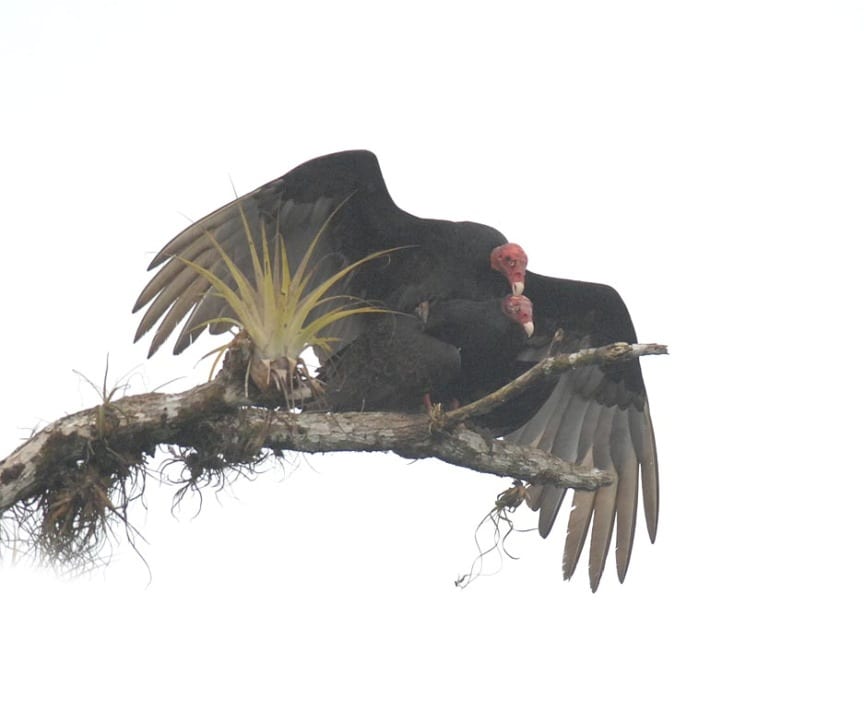
Mating Turkey Vultures aren’t exactly hard core porn but it’s a first for me. And in all my decades of field work, I have only seen one Black and one Turkey Vulture nest! The former was in a cave in West Florida and the latter was in a silo in Oklahoma.
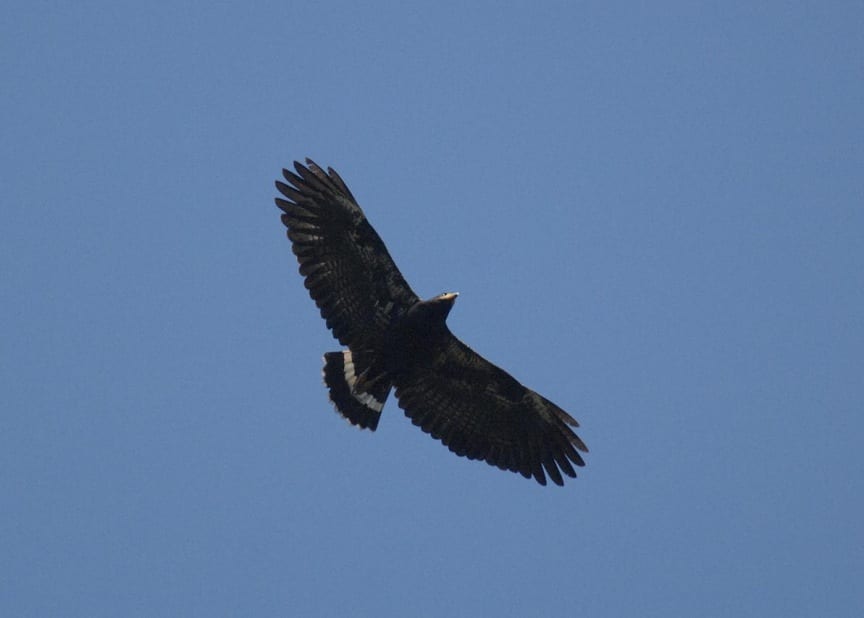
Dark hawks are among the most difficult birds to identify. This istheMangrove Black-hawk, and you can see how broad their wings are, for riding thermals. This species has been split off from the Common Black-hawk of the Desert Southwest.
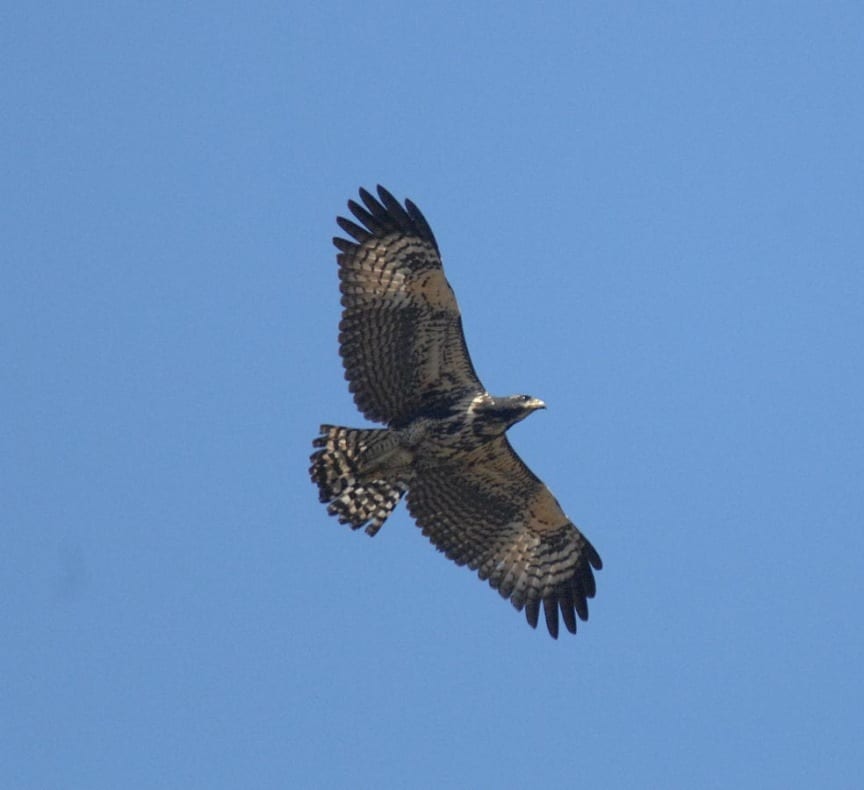
Typically, immature hawks are speckled and not as colorful as the adults. This is a juvenile Mangrove Black-hawk, possibly beginning to molt into the adult plumage.
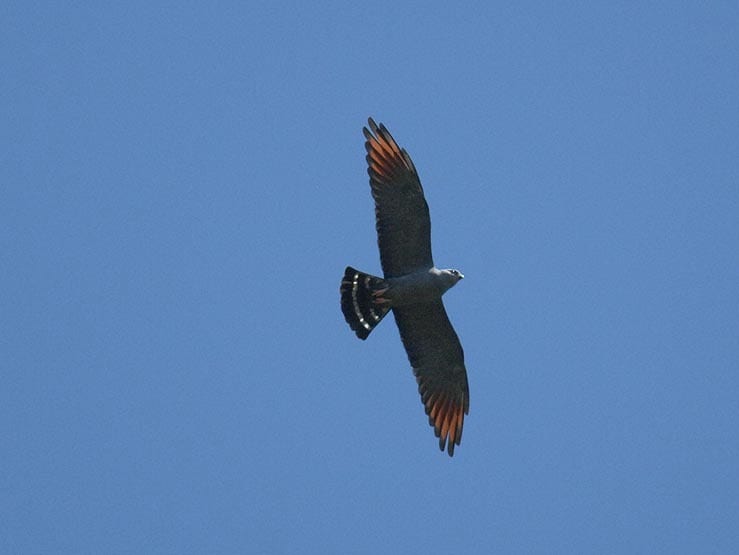
Last but not least ((!), my first-ever Plumbeous Kite in Central America! Like our closely-related Mississippi Kite, they migrate seasonably up and down Central America, but these are told by their reddish primaries.

 Posted in
Posted in 























